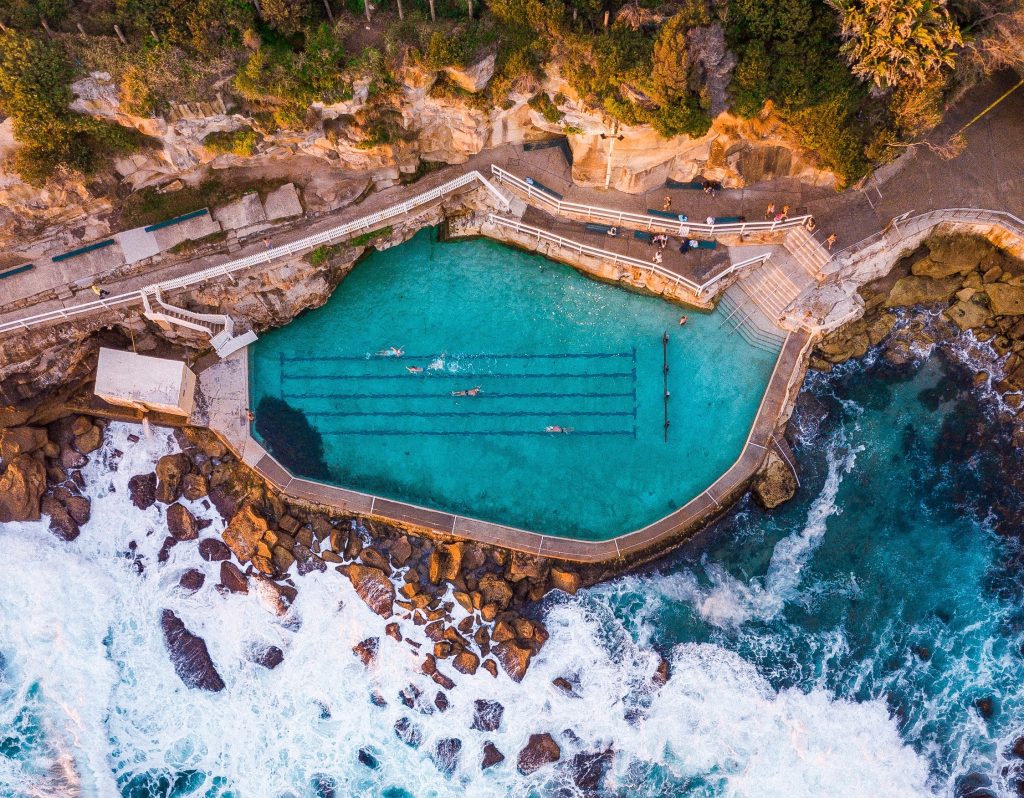Image courtesy of Silas Baisch on Unsplash
As an aquatic center manager, there’s a good chance that you’re always looking for ways to reduce costs and promote sustainability. Fortunately, when it comes to going green, there are plenty of options available to aquatic centers. From utilizing energy-efficient equipment to promoting sustainable practices among staff, taking steps to reduce your carbon footprint can help your facility save money and protect the environment. In this blog post, we’ve compiled some practical tips that aquatic center managers and staff can use to make their facilities more sustainable.
And, if you’re looking for professional services that can help you manage your aquatic center or community pool while promoting sustainability, SFC offers aquatic center management services focusing on sustainable practices.
Upgrade Your Lighting
One of the easiest ways to reduce energy consumption and costs at your aquatic center is to upgrade your lighting. Traditional lighting options like incandescent bulbs and fluorescent tubes use significantly more energy than LED bulbs. LED bulbs are a better choice because they have a longer lifespan, they’re more efficient and they generate less heat, which can help keep your facility cooler and reduce air conditioning costs. Make the switch to LEDs, and you’ll see a noticeable reduction in your energy bills.
Control Water Waste
With public pools or aquatic centers using at least 100,000 gallons of water, it’s important to take steps to reduce water waste. Simple things like fixing leaks and installing low-flow fixtures can help reduce water usage significantly. You can also consider investing in a rainwater collection system to collect water for irrigation and other non-potable uses. Encourage your guests to conserve water as well by posting signs and using educational materials to promote sustainable practices.
Reduce Chemical Use
Chemicals are necessary to keep your aquatic center clean and safe, but it’s important to use them in moderation. Overusing chemicals can be harmful to swimmers and the environment, and it can also be expensive. Start by testing your water regularly and adjusting chemical usage as needed to maintain proper water quality. Consider using natural alternatives like ultraviolet treatments or ozone disinfection systems to reduce your reliance on chemicals.
Invest in Energy-Efficient Equipment
Aquatic centers use a lot of energy to power equipment like pumps, heaters, and filtration systems. Investing in energy-efficient equipment can help reduce your energy consumption and costs. Look for equipment that’s Energy Star certified, and consider investing in variable speed pumps, which can help reduce energy usage significantly. Also, ensure that your equipment is regularly maintained to ensure that it’s functioning at peak efficiency.
Promote Sustainable Practices Among Staff and Guests
Finally, it’s essential to encourage sustainable practices among both staff and guests. Consider implementing staff training programs focusing on sustainable practices like proper chemical use, water conservation, and energy efficiency. You can also post signs and use educational materials to encourage guests to conserve resources and act sustainably while they’re at your facility. By working together, you can create a culture of sustainability at your aquatic center that benefits everyone.
Sustainable aquatic centers benefit both aquatic center management and the environment. By taking steps to reduce energy consumption, control water waste, reduce chemical use, invest in energy-efficient equipment, and promote sustainable practices among staff and guests, we can reduce our carbon footprint and preserve the environment.






